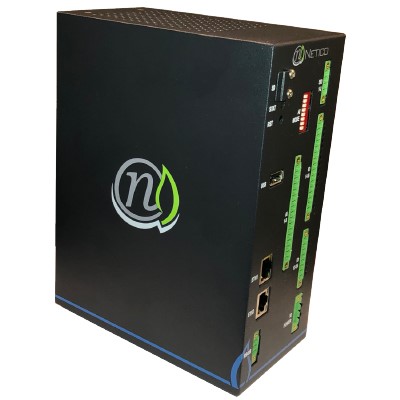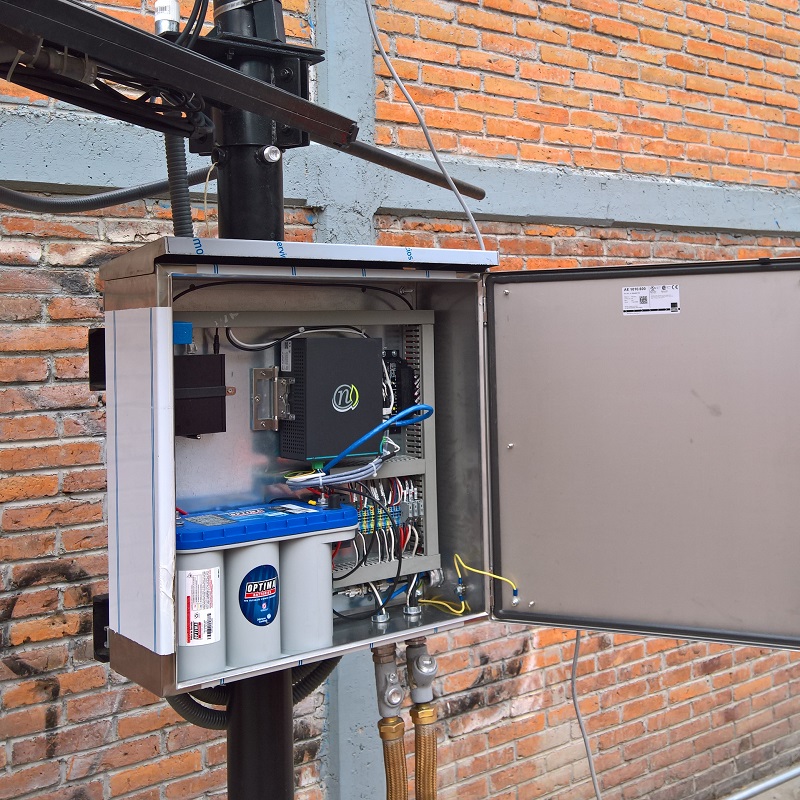Turnkey leak detection solution suitable for any pipeline
Reliable leak detection and localization are the most challenging issues pipeline operators are facing nowadays. Accidental or intentionally produced leaks can damage the environment, as well as cause problems with critical infrastructure safety, personnel safety, plant integrity, and result in huge commercial and reputation costs. Considering the significance of the related risks, the leak detection system should be an integral part of the leak prevention program and overall risk reduction strategy.
Netico's Leak Hunter is a cost effective, end to end, solution for leak detection, which can precisely pinpoint the location of the leak and the amount of leaked fluid. It works with all non-compressible liquids, so it can be also used for detection of water and waste water leaks.
Fast leak detection, precise location and quantity of leaked fluid.
Hybrid Approach
Netico Leak Hunter provides great performance due to its hybrid leak detection engine which comprises of five different methods to identify the leak:
1. p-wave Recognising “leak-like” pressure disturbance wave 2. q-wave Recognising “leak-like” disturbance wave in mass and volume flow 3. q-balance Identifying mass and flow imbalance 4. p-slope Recognising pressure gradient slope irregularity 5. v-pipe Comparing virtual to real pipeline behaviour in real timeMulti-layer Detection
To make the final decision about the leak, Leak Hunter passes through four layers of the detection process, waiting for all virtual phenomena and events to occur within an expected scenario.
In the last layer of the leak detection process, Leak Hunter integrates the results of used methods through a robust statistical and probability calculation, which improves the authenticity of an assertion of a leak event. This feature prevents Leak Hunter from generating false alarms.
4th layer - Analogy:
Determining similarities between leak features based on the real data and on a virtual model
3rd layer - Imbalance:
mass & volume imbalance detection
2nd layer - Recognition:
p & q disturbance wave features analysis and categorisation
1st layer - Capturing:
p & q disturbance wave identification

Probability calculations
(getting locations, time, scale of detected leaks)
Reliability
High reliability of final conclusionsBy calculating the cumulative probability of an event in real time, while the event is occurring, Leak Hunter algorithms make a very reliable assessment of time, location and leakage rate. In accordance with the calculated authenticity of the event, Leak Hunter provides the dispatcher with corresponding warnings and alarms. In addition, it is capable of reconfiguring the pipeline data set by eliminating gauges that return obviously bad values. It also has autonomous-learning capabilities, as it continuously updates its databases of events with newly detected ones. Leak Hunter associates features of the particular event with proven authenticity and in that way improves categorisation of future p & q waves.
Reactivity
Response rate at the speed of soundConsidering that two of Leak Hunter algorithms are based on mechanical wave propagation through the fluid, the reaction time of Leak Hunter is as fast as the speed of sound through the fluid. Leak Hunter algorithms use values of temperature and viscosity of the fluid to deal with varying speed of mechanical propagation through the fluid. Apart from physical properties of the fluid, the length of pipeline and its sections, as well as disposition of the pressure gauges along the pipeline, will determine the overall responsiveness of the system. The more measurement gauges, the more responsive the Leak Hunter is.
Sensitivity
Detection sensitivity less than 0.5% of the pipeline throughputAlthough the sensitivity in leak detection directly depends on gauges’ sensitivity, Leak Hunter goes beyond this limit by using and analysing the compound image of an event. It considers fluid viscosity variations caused by temperature changes along the pipeline, and physical properties of the pipeline as well. Furthermore, Leak Hunter integrates the algorithms that are specially prepared for detection of slow and small leaks, as well as for detection of multi leaks.
Accuracy
Accurate within 0.15% of the section lengthAccuracy in the detection of time and location of the leak directly depends on sampling resolution and speed of the measurement, data acquisition and processing equipment. However, to improve accuracy, Leak Hunter integrates the propagation pattern of every single p and q waves identified in the specific probability calculation to precisely locate a leak in time and space.

Hunter Sense
If you are looking for best accuracy, ask for Hunter SenseHunter Sense is based on the Netico Edge 100 platform, equipped with special software and algorithms for leak detection. Ultra-high sampling rate, paired with powerful data processing, ensures precise localisation of leak events through advance filtering and pattern detection algorithms applied in real-time on measured data. Hunter Sense devices are installed in the measurement stations along the pipeline and are equipped with GPS devices for precise time synchronisation. When leak patterns are detected, Hunter Sense sends an information about the detected pattern and the detection time to the central Leak Hunter server, which reconciles input from all Hunter Sense locations using algorithms described above.
An ultra-high and adjustable sampling rate of Hunter Sense, in pair with high quality measurement equipment, makes a winning combination in leak detection accuracy.
Autonomous-learning
By analysing the data log of the interpretation, and recognising and comparing similarities and deviations between data features of authentic and fake leaks, Leak Hunter learns and continuously increases its capability to classify phenomena that indicate authentic and fake leak events.
Over time, Leak Hunter enriches its leak pattern database: p- and q- wave footprints, mass/volume imbalance cases and pressure gradient line irregularities, making Leak Hunter more reliable in leak recognition. In addition, Leak Hunter tunes the raw data set according to the history of reliability of each piece of measurement equipment, adding this information to the final leak event probability calculations.
Web Client Application
Web client application enables supervision of pipeline integrity and facilitates tracking of the physical events along the pipeline using only a web browser on desktop and mobile devices. Web client interface supports simple and effective visualisation of physical events that are occurring on the pipeline in real time and provides reports necessary to document historical events.
Customisation support
Every pipeline is characterised by specific fluid dynamics phenomena and unexpected deviations that can't be predicted, but which can considerably affect the reliability and accuracy of the leak time and location detection. To minimise these deviations, each installation of Leak Hunter requires fine tuning, and Netico's solution is designed to be customisable and adjustable to particular pipeline configurations.
To match real fluid dynamics phenomena, Netico experts always create a dedicated virtual pipeline model. Through the in-depth comparative analysis of the data acquired from the field and data returned from the simulations, the experts can identify necessary customisations.
Try Leak Hunter
Contact us and we will model and simulate leak events in your pipeline based on the information you provide us. This simulation can be used to show Leak Hunter functionality and determine the right configuration for the concrete case.







